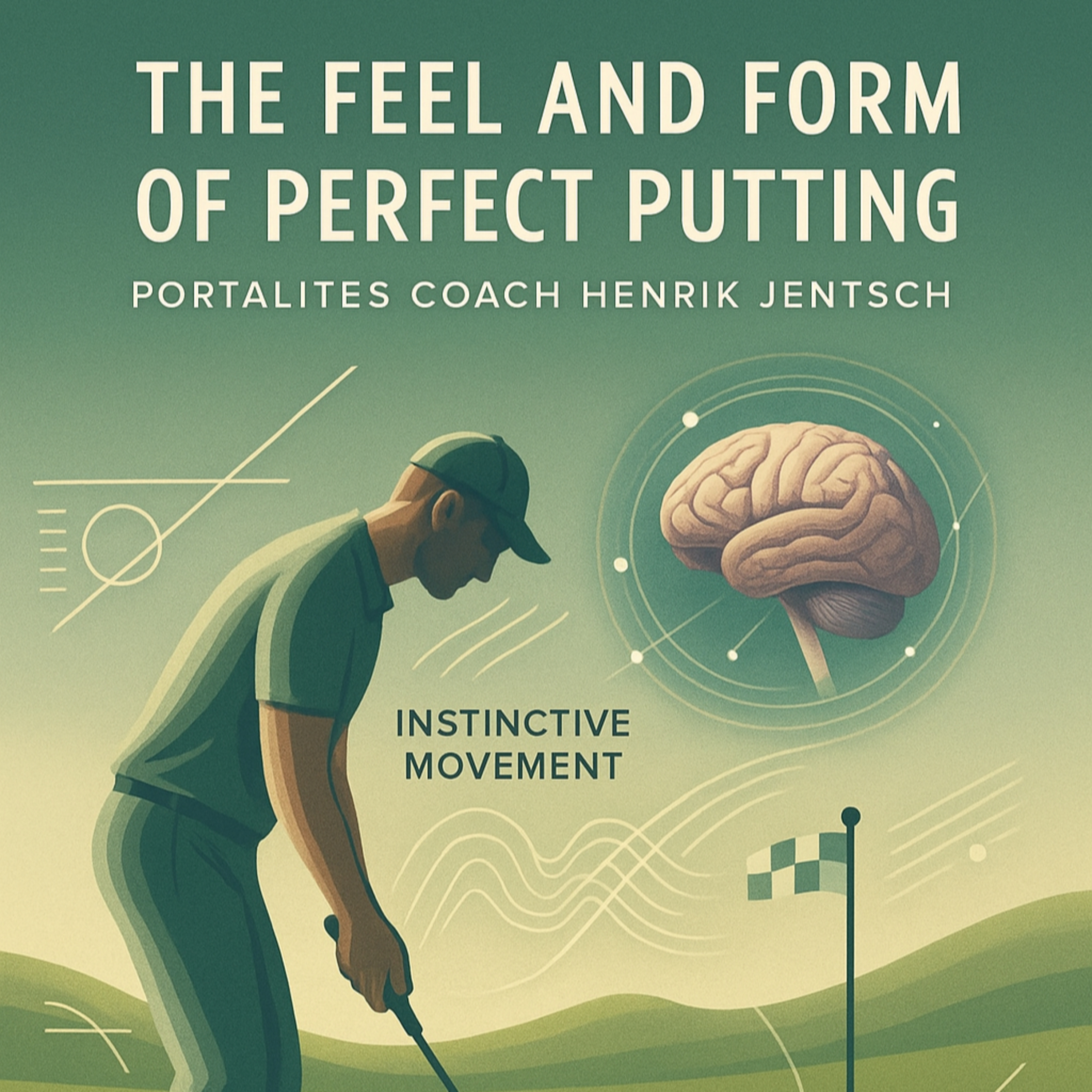#258 The Feel and Form of Perfect Putting
- Author
- Golf247.eu
- Published
- Wed 18 Jun 2025
- Episode Link
- https://podcasters.spotify.com/pod/show/puttin-pro/episodes/258-The-Feel-and-Form-of-Perfect-Putting-e34dcqo
Henrik Jentsch's putting philosophy centers around one concept: the synergy of feel and form. Blending biomechanical precision with natural instinct, his method helps golfers build a reliable, repeatable putting stroke.
Puttalyze focuses on four core skills: reading the green, aiming, straight strokes, and distance control. Each starts with technical structure and ends in instinctive execution.
Distance control, or "touch," begins with establishing a smooth, pendulum-like rhythm. The tempo remains constant, while the length of the backswing adjusts to match the required distance. Knowing the green speed is also essential. To tap into instinct, Jentsch recommends using head movement to gather distance information—what he calls "embodied knowledge." This helps the brain process distance naturally, without overthinking. The goal is to let instincts take over and avoid trying to control the motion consciously.
Straight strokes require minimizing hand and arm movement. Jentsch emphasizes forming a triangle with shoulders, arms, and putter shaft, moving from the shoulders rather than the hands. By letting the motion flow naturally and eliminating wrist action, the stroke becomes repeatable and free of unnecessary tension. Shoulders drive the motion, and the hands simply go along for the ride.
Aiming is less about technical alignment and more about clean perception. Jentsch suggests using a straight-out gaze—eyes looking directly forward rather than down the cheeks—to avoid distorted vision. A simple head swivel helps verify that the gaze and putter face are in sync. Once set up, golfers should trust their eyes and let natural visual alignment guide them.
Green reading, in this system, is a sensory task. Walking the green from multiple angles—especially from behind the hole—helps players understand slope and break. Observing the terrain, including surrounding hills or valleys, reveals the green’s flow. Jentsch also highlights how diminishing visual detail can indicate slope steepness. Feeling balance shifts through the feet and even noting smells like fresh-cut grass adds more layers of information.
The mental game, finally, is about clearing space for instinct to operate. Jentsch advises developing a consistent pre-putt routine that includes both physical and mental cues. A steady breath, a calming phrase, or a repeated look at the ball helps establish focus. He recommends fixating on the shine of the ball—a small reflection point—to still the mind and center attention. Once the mind is clear, the body can perform.
Puttalyze connects science and instinct. Learn the form. Trust the feel. Let the putter become part of you.
